The Economics and Statistics Division maintains archives of previous publications for accountability purposes, but makes no updates to keep these documents current with the latest data revisions from Statistics Canada. As a result, information in older documents may not be accurate. Please exercise caution when referring to older documents. For the latest information and historical data, please contact the individual listed to the right.
<--- Return to Archive
For additional information relating to this article, please contact:
November 29, 2022COMPENSATION OF EMPLOYEES, Q3 2022 Quarter-over-quarter (Q3 2022 vs Q2 2022, seasonally adjusted)
Total compensation of employees for all industries increased by 0.8% in Nova Scotia, rising to $9.80 billion in Q3 2022. National employee compensation was up 1.2% with gains in all provinces. The fastest rise was reported in Manitoba and the slowest in Newfoundland and Labrador.
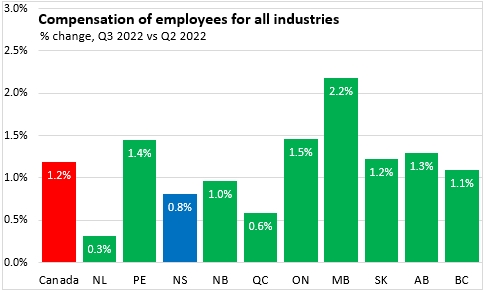
Year-to-date (January-September 2022 vs January-September 2021)
Nova Scotia's employee compensation for all industries was up 8.6% for the first nine months of 2022, when compared with the same months last year. National employee compensation grew 10.0% with gains in every province. The fastest increase was reported in British Columbia, while the slowest rise was in Manitoba.

Year-to-date growth in wages and salaries by industry show that the strongest contributions to rising payrolls cam from the professional and personal services industries as well as health care and social assistance (which includes daycares).
In percentage terms, local government public administration as well as agriculture, forestry and fishing reported the largest gains in wages and salaries. Nova Scotia's military payroll as well as mining, oil and gas industries reported declining payrolls. Declining military payrolls reflect a large retroactive payment received in March of 2021.
Note that changes in employee compensation reflect changes in wages and salaries as well as changes in contributions to social insurance. Changes in wages and salaries include the effects of changing numbers of employees, changing hours worked and wage rates as well as effects from differences in pay period from one year to the next.
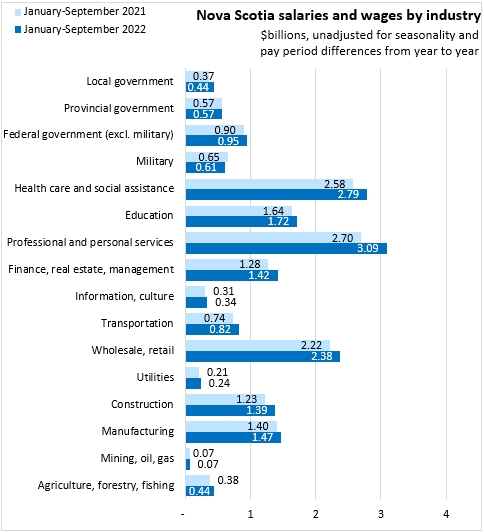
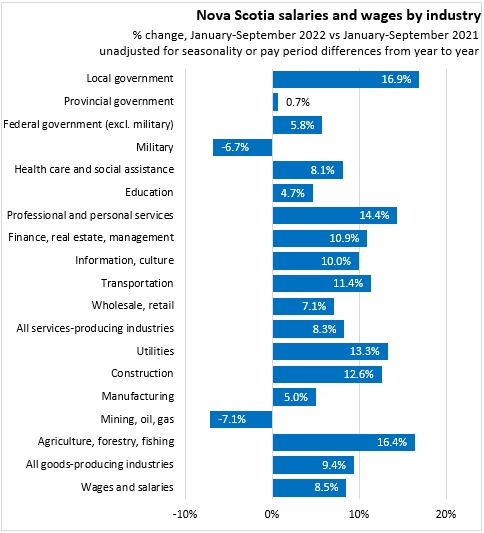
Trends
Monthly data for employee compensation (seasonally adjusted) peaked in June of 2022, with declines in each of the next two months before rebounding in September.
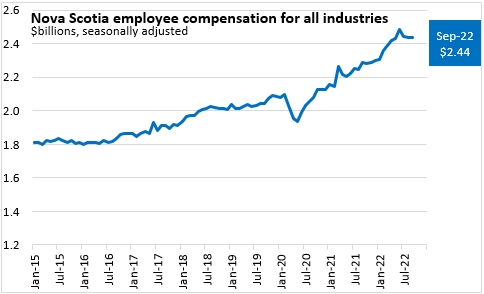
On a year-over-year basis, growth in employee compensation slowed to 6.5% (September 2022 vs September 2021). This was still the 19th consecutive month with year-over-year compensation growth that exceeded 5%.
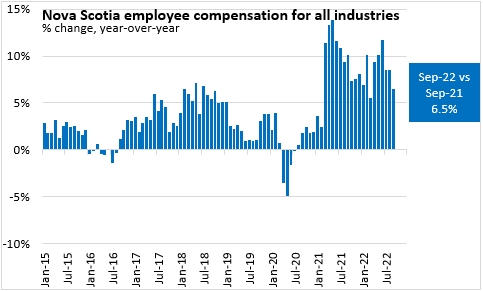
Source: Statistics Canada. Table 36-10-0205-01 Wages, salaries and employers' social contributions (x 1,000)
<--- Return to Archive